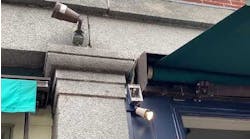The National Fire Protection Association (NFPA) has issued a tentative interim amendment (TIA) to the 2017 National Electrical Code, which revises Sec. 682.2 and Sec. 682.15.
As outlined in the TIA, a new definition is added to Sec. 682.2:
“Pier. A structure extending over the water and supported on a fixed foundation, or on flotation, that provides access to the water.”
In addition, the TIA revises Sec. 682.15 to read as follows:
“682.15 Ground-Fault Circuit-Interrupter (GFCI) Protection. Ground-fault protection shall be provided in accordance with (A) and (B).
“(A) Receptacles. Fifteen- and 20-ampere single-phase, 125-volt through 250-volt receptacles installed outdoors and in or on floating buildings or structures within the electrical datum plane area shall be provided with GFCI protection for personnel. The GFCI protection device shall be located not less than 300 mm (12 in.) above the established electrical datum plane.
“(B) Feeder and Branch Circuit Conductors. Feeder and branch circuit conductors that are installed on piers shall be provided with ground-fault protection set to open at currents exceeding 30 mA. Coordination with downstream ground fault protection shall be permitted at the feeder overcurrent protective device.
“Exception: Transformer secondary conductors of a separately derived system that do not exceed 3 m (10 ft) and are installed in a raceway shall be permitted to be installed without ground-fault protection. This exception shall also apply to the supply terminals of the equipment supplied by the transformer secondary conductors.”
The TIA was processed by the National Electrical Code Panel 17 and the NEC Correlating Committee, and was issued by the Standards Council on April 10, 2018, with an effective date of April 30, 2018.
You can view the full text of the TIA on the NFPA website.
Note: A TIA is tentative because it has not been processed through the entire standards-making procedures. It is interim because it is effective only between editions of the standard. A TIA automatically becomes a public input of the proponent for the next edition of the standard; as such, it then is subject to all the procedures of the standards-making process.



